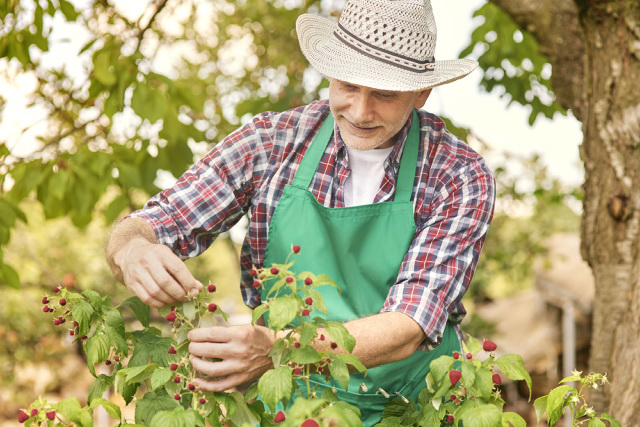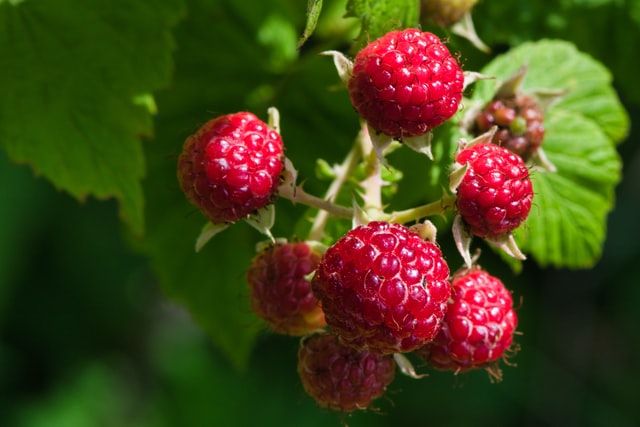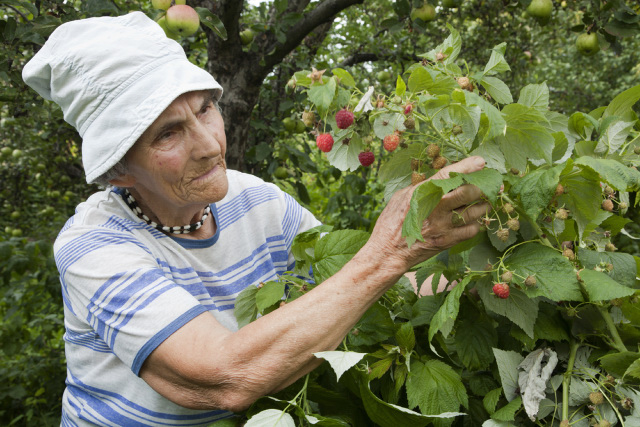Raspberries are a hardy, tasty, and forgiving crop, with some varieties capable of rewarding you with a harvest in their first year. If you have limited space to work with, you may be considering planting raspberries under fruit trees. Is this a good idea and what do you need to think about when planning where to grow your raspberry bushes?

Raspberries can be grown under fruit trees successfully, provided they receive adequate sunlight, and water. Both the fruit tree and the raspberry bush will need adequate soil nutrients and physical access for maintenance should be considered.
Trying to get different-sized plants to happily coexist can be an important challenge for gardeners with limited space to work with. However, if you maximize the potential of your garden there are ways of planting raspberry bushes alongside fruit trees so that they can both yield healthy, satisfying harvests. Let’s take a closer look at how to unlock this potential!
Related: Raspberry Pests and How to Get Rid of Them
Table of Contents
Will Your Raspberries Receive Enough Sunlight?

One of the first difficulties when planting any crop beneath established fruit trees is the possibility that the new arrivals will be too shaded. Too much shade certainly isn’t good news for raspberries.
Although they can function and grow in partial shade, your yield is likely to be significantly reduced if they get regular sun. Indeed, some of the best raspberry harvests will come from plants exposed to full sunlight over the growing season.
How can you guard against keeping raspberries too much shade? Firstly, observation is crucial. Ideally, you will have observed how the light falls and is blocked by taller structures in your garden, such as trees and walls. This will hopefully have given you an idea of where the light pockets and light traps are throughout the seasons.
Try to pick a spot for raspberries that gets regular sun throughout their growing months. Full shade is no good.
The type of fruit tree you are planting under will also determine shade and sun levels. If the tree canopy is dense and broad, this could prove problematic. However, properly pruned dwarf or semi-dwarf fruit tree varieties may block out less light and leave greater exposure for raspberries to thrive.
Pruning back the canopy of your fruit tree can help encourage healthy fruit production as well as maintain healthy light levels for your raspberry bushes beneath.
Will Your Raspberries Receive Enough Water?
To do their best, raspberries require consistently moist, well-draining soil throughout the growing season. This is particularly true of the fruiting months. They are likely to require regular watering during drier, hotter periods if they are to continue producing delicious berries.
Planting just beyond the drip line of the tree should ensure that your raspberries get the full benefit of rainy spells. It will also provide a bit of well-needed space between the raspberries and the fruit tree, which is important for a range of reasons (we’re going to be covering these next!).
It’s also worth noting that raspberries tend to have their roots close to the surface, hence the need to keep them watered regularly. Mulch is beneficial in helping to keep the soil moist, but some trees don’t appreciate being heavily mulched too close to the trunk. This is another reason spacing is important.
Will My Raspberries Have Enough Space?
So let’s talk about spacing then! You’ll want to plan and maintain a reasonable gap between your raspberry plants and your fruit trees. What does a reasonable gap mean?
Essentially, you want to be able to move a lawnmower and yourself freely through the space between the tree and the raspberry plant. Ideally, space enough to fit two humans walking side by side should be sufficient. This gap is important for a number of reasons.
Firstly, it encourages airflow between the fruit tree and the raspberry bush and keeps the trunk of the fruit tree properly aerated. This discourages fungal growth and disease.
Furthermore, from a gardening perspective, you want to be able to access both your fruit tree and the back of your raspberry plants with ease. You may need space to irrigate, fertilize, use a ladder, and, perhaps most importantly of all, harvest the fruits of your labor!
Raspberries can also run a bit wild if left unchecked. Without maintaining a proper gap, you may well find they start to cover and smother the trunk of the fruit tree. Although this may not be massively problematic for more established fruit trees, it does carry a greater risk of disease and fungal growth. It also makes it practically impossible to treat your fruit trees with dedicated sprays that will not also end up covering the raspberry plants.
It’s a good idea to grow your raspberries using some form of trellis like this or support such as this one. This can help prop up the plant and prevent it from collapsing under its own weight. It can also make shaping and harvesting the plant more manageable.
When putting in trellis or supports, try to ensure you’re not digging them in so deep that you risk damaging the root structures of your fruit tree. Using weighted surface supports, such as bricks or heavy wooden blocks, rather than ones that are dug in deep is one possible solution.
Will My Raspberries and Fruit Tree Compete for Nutrients?
To a certain extent, yes. However, depending on how well established your fruit tree is, the way the fruit tree gathers nutrients and water will be slightly different from your shallow-rooted raspberry plants. This is why it’s often a good idea to plant near established fruit trees rather than newly planted ones.
Newly planted fruit trees are going to be far more competitive in terms of the soil nutrients they require. They will also, with a young root system, be taking their nutrients from closer to the surface, where your raspberries also feed from. If you are planting together, be sure to make sure you have enough organic matter in the ground to feed both plants and watch out for nitrogen burn as a result of over-fertilization.
Depending on the fruit trees you are growing, you’ll want to check that their nutrition requirements are not diametrically opposed to your raspberries. Fortunately, this shouldn’t be the case, as most fruit trees will need a relatively similar balance of nutrients. As long as you are feeding with gentle, slow-release fertilizer such as this one, you should be ok, but it is worth being mindful of potential competing food needs.
Furthermore, some fruit trees may require spraying or treatment over the course of their lives. If this is the case, you need to be careful you do not accidentally spray or treat your raspberry plants with something that could harm or hinder them. This is another reason why a functional gap between raspberries and fruit trees is important.
The Benefits of Planting Raspberries Under Fruit Trees

Once you can ensure that your fruit tree and raspberries are getting the light, water, and nutrients they need to flourish, there are a number of benefits to this companion planting!
Raspberries, as well as other berry bushes, are great at encouraging flying insects and pollinators to the garden. This can be a great way to boost the diversity of your garden’s ecosystem. Pollinators are also important in order for fruit trees to produce fruit!
Furthermore, raspberries can provide physical protection to your fruit trees. If you have deer or other wild animals that tend to nibble on your bark or fruit, you may find that a spiky raspberry barrier is a good, natural method for keeping them at bay!
Finally, if you’re looking to plant companion plants that provide an edible harvest for as much of the year as possible, raspberries can be a good option. Some varieties will provide two harvests per year, a light one in early summer and a fuller harvest in fall. They can also start rewarding you with fruit as early as their first year in the ground.
While you’re waiting on some delicious apples or pears to ripen, you can be tucking into a few early berries!

Related Reading:
